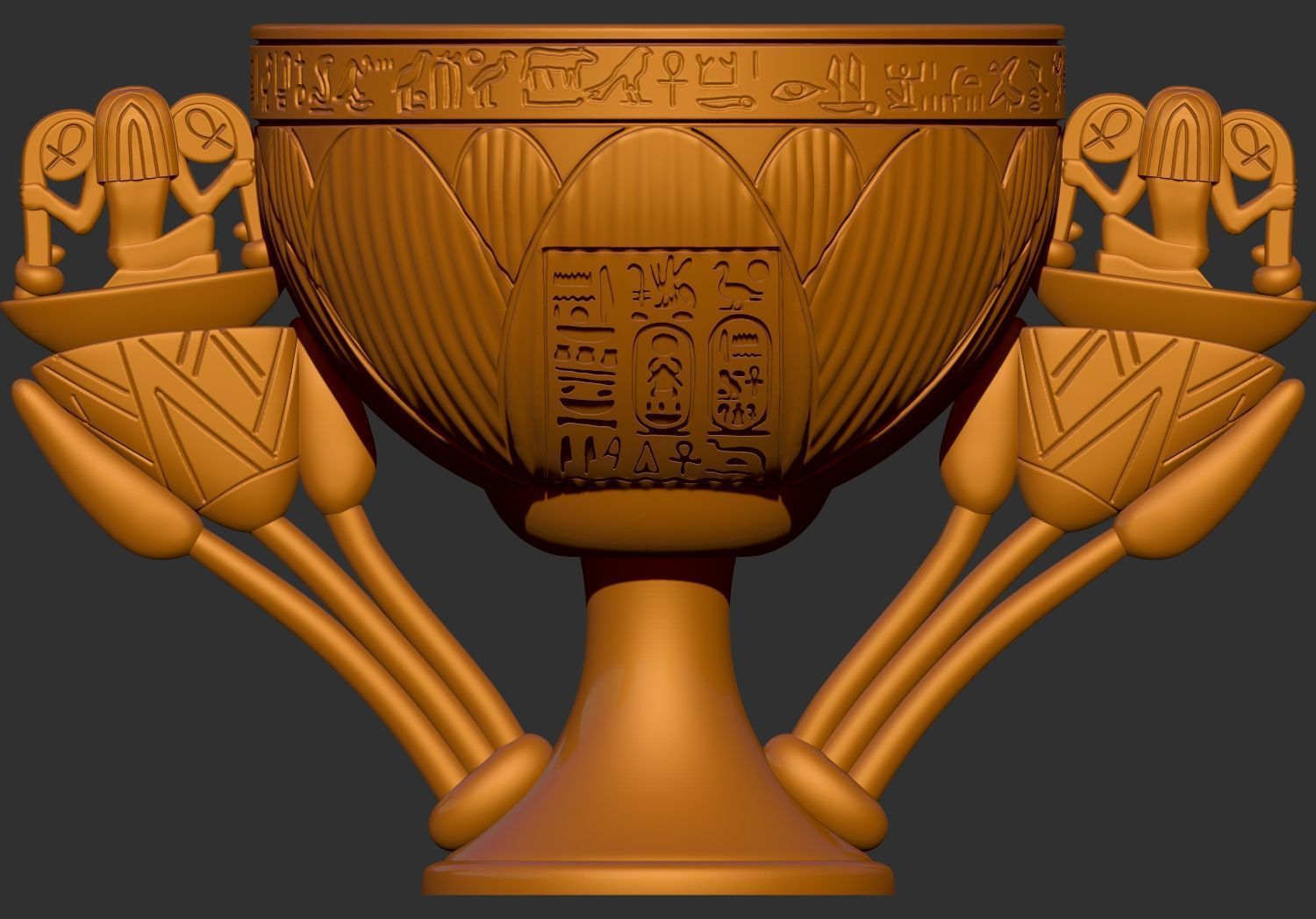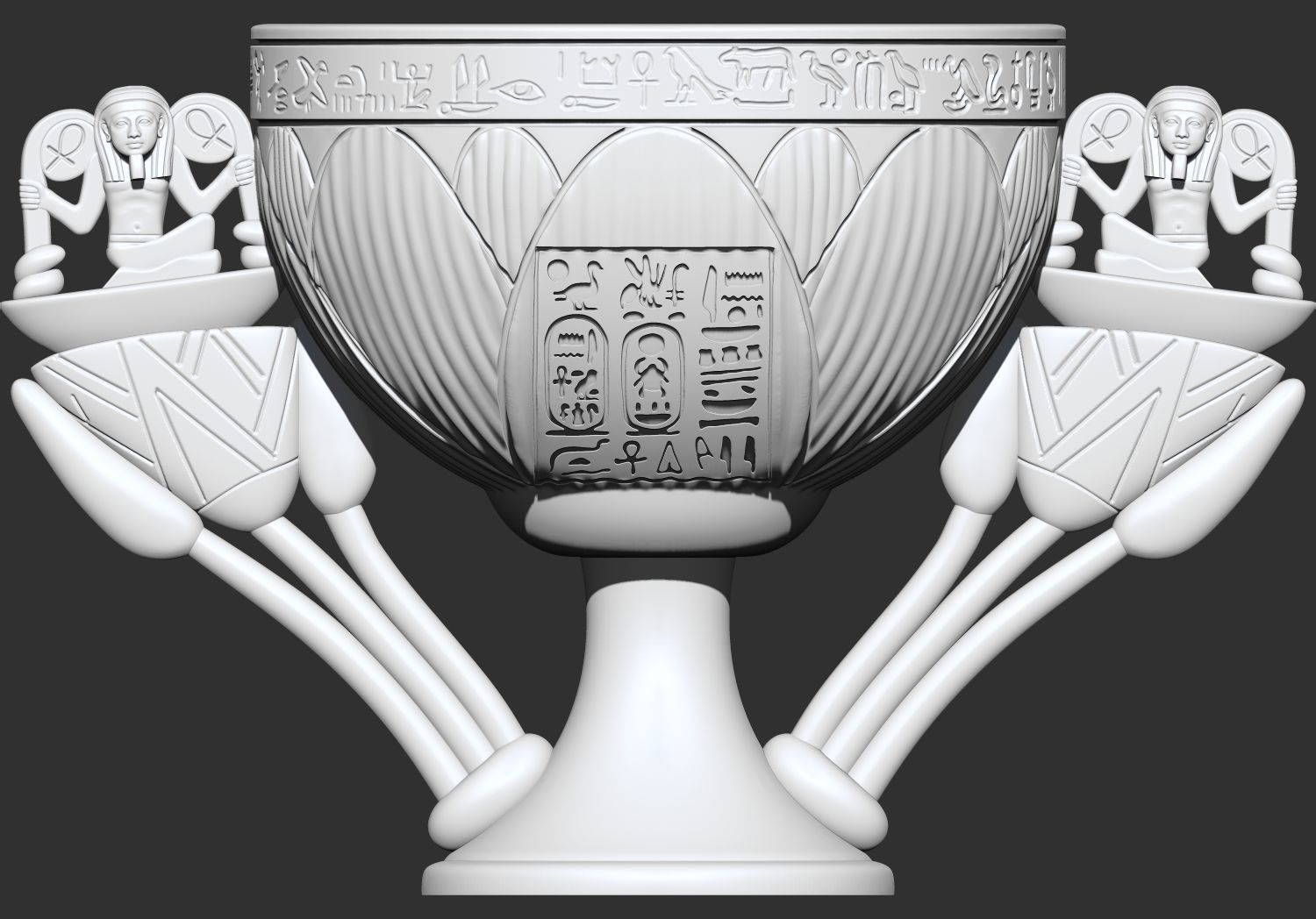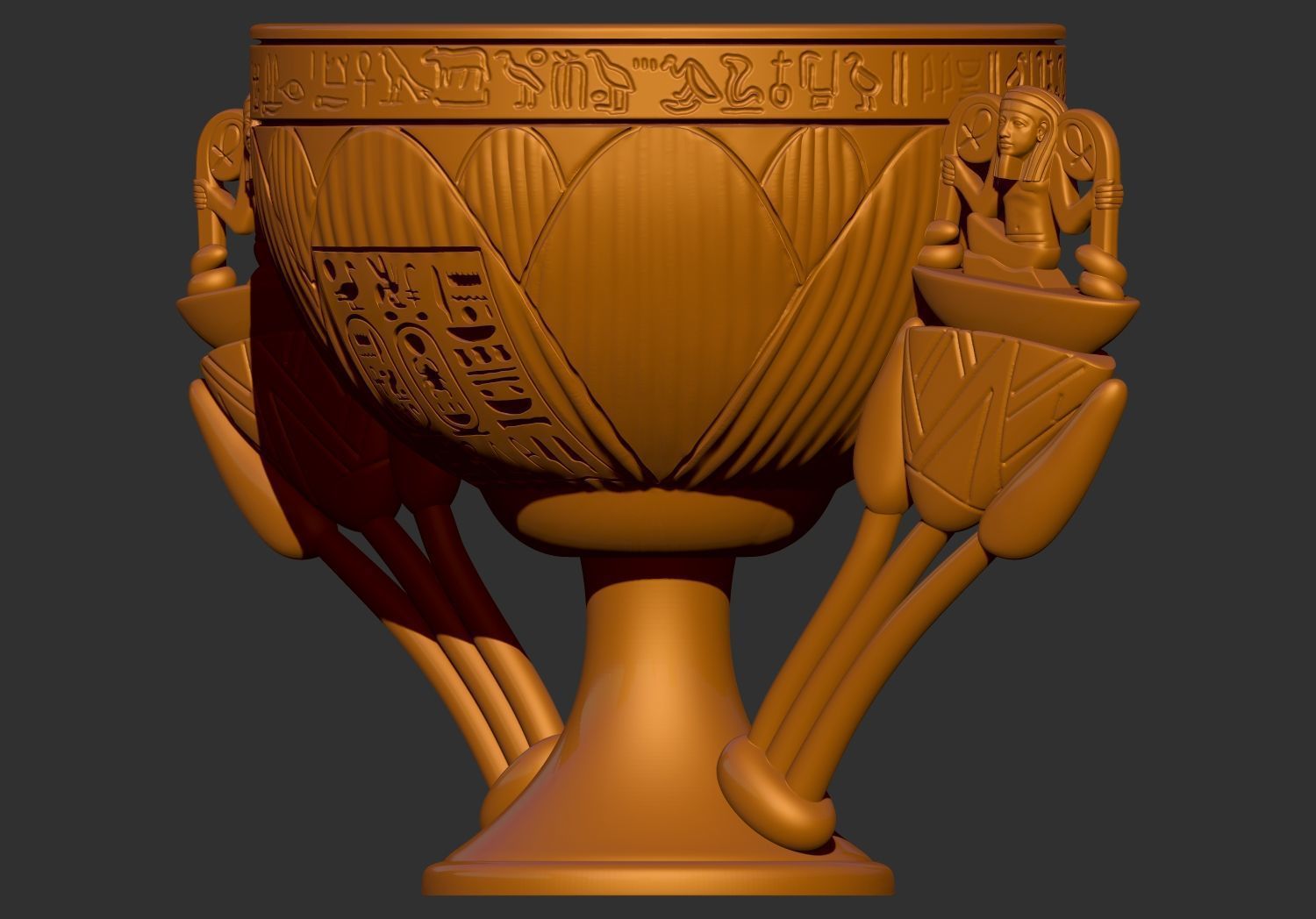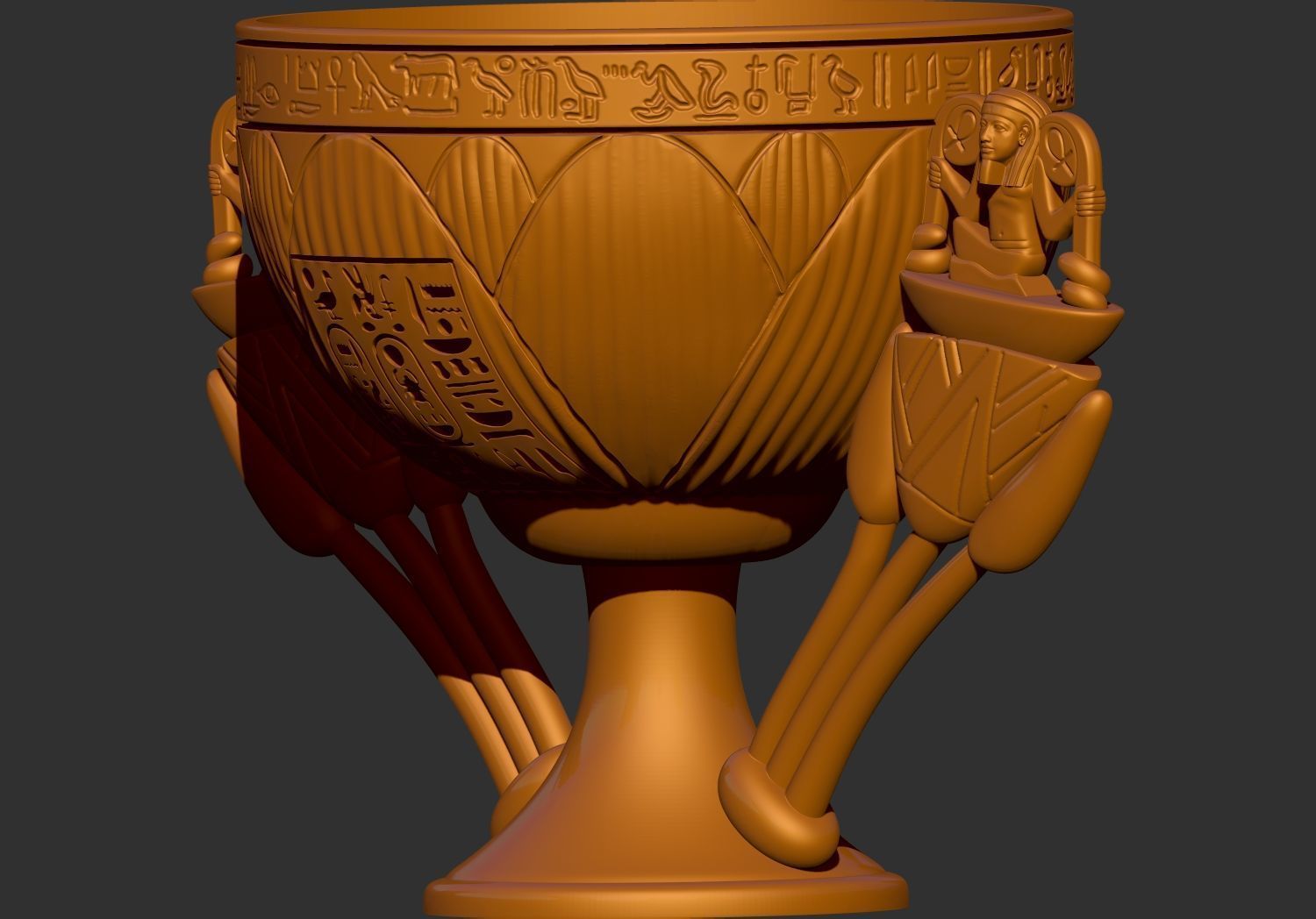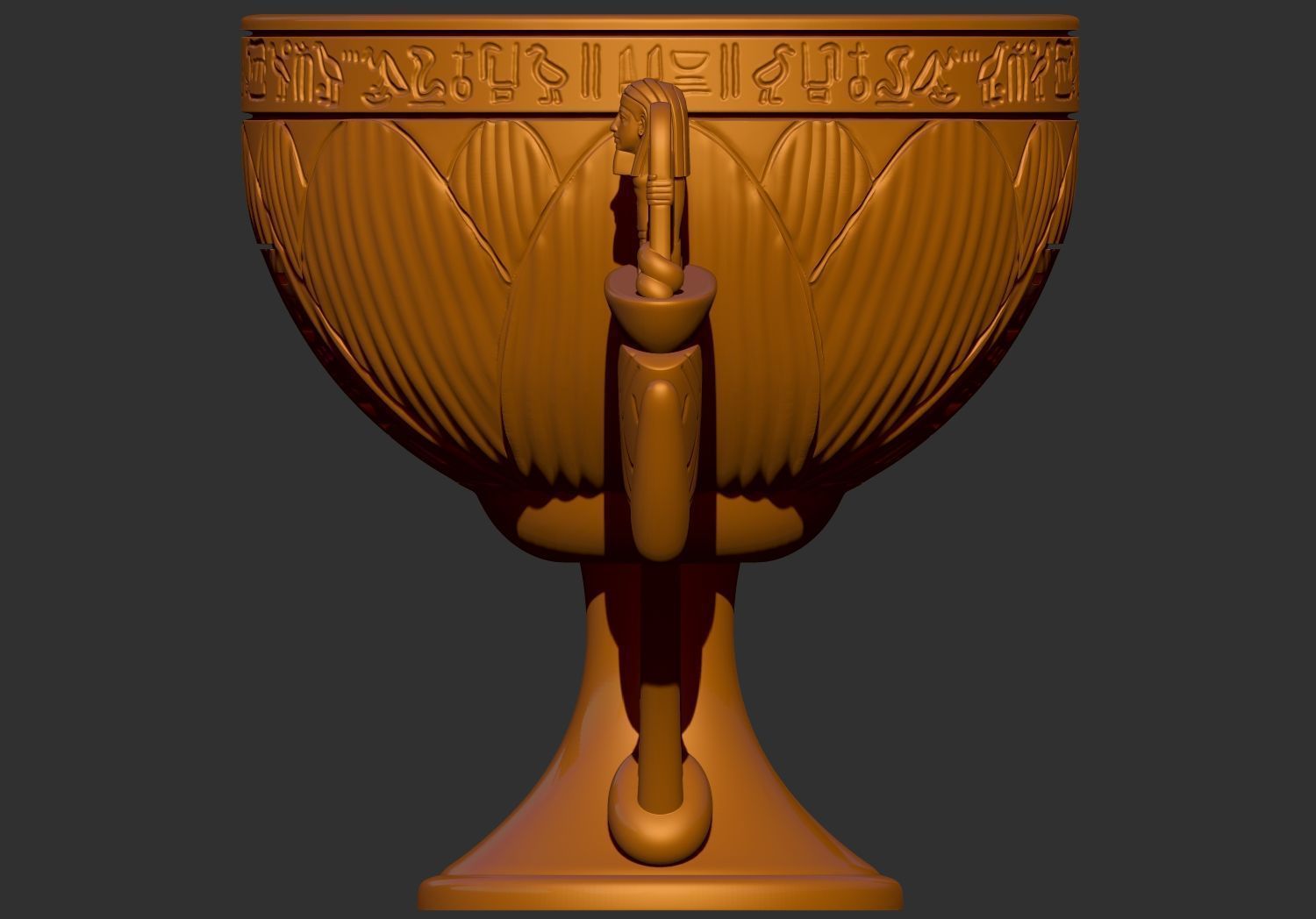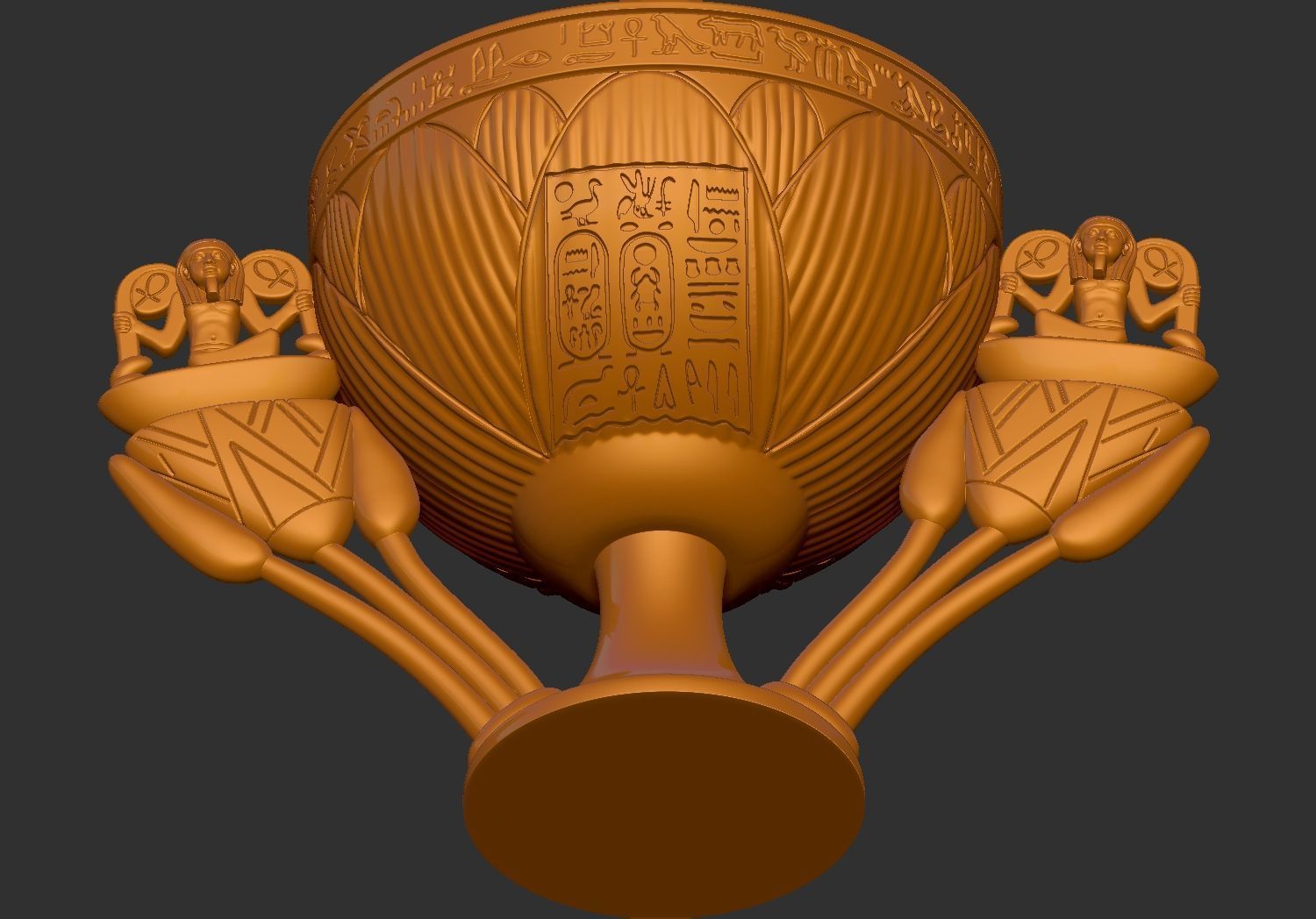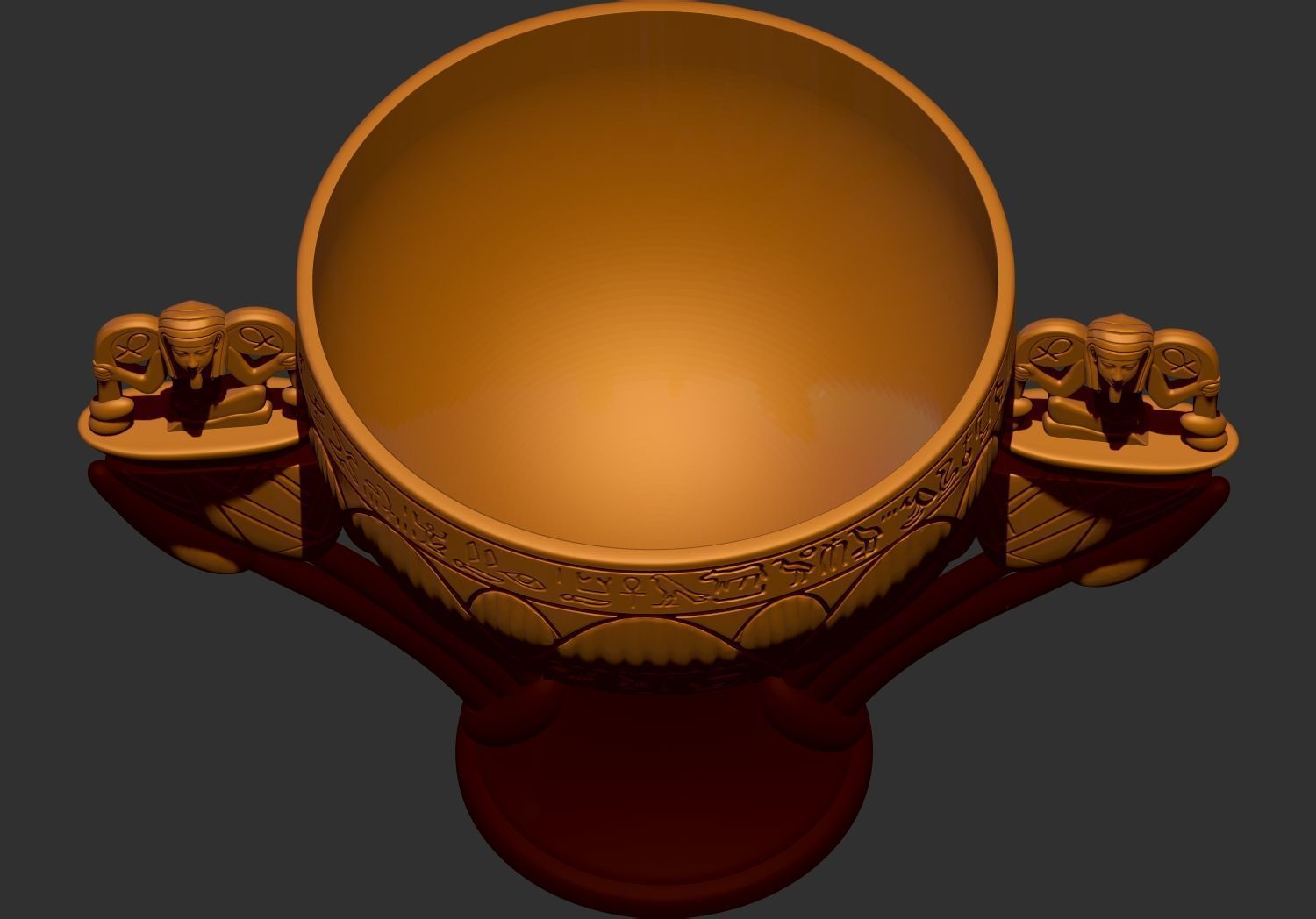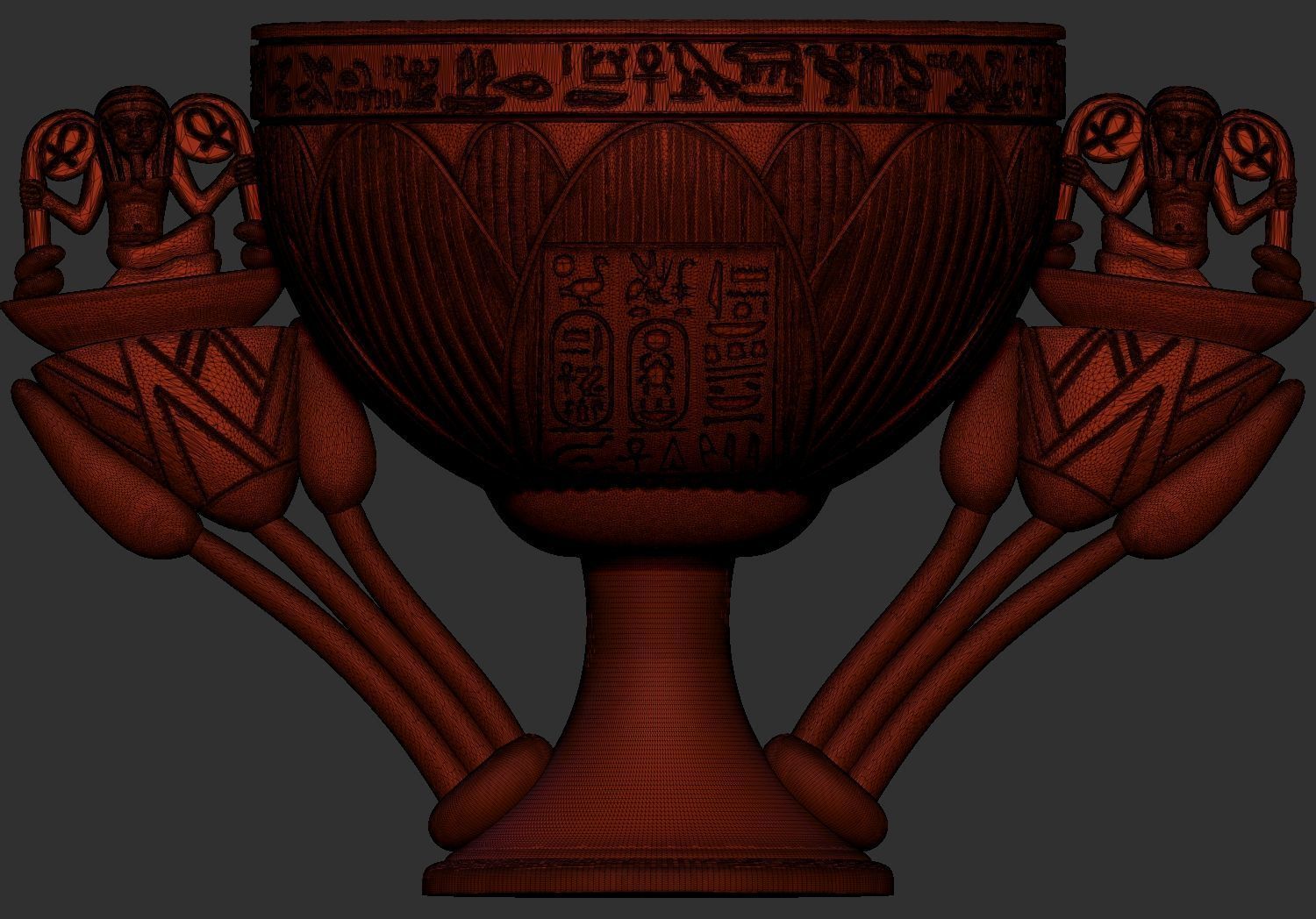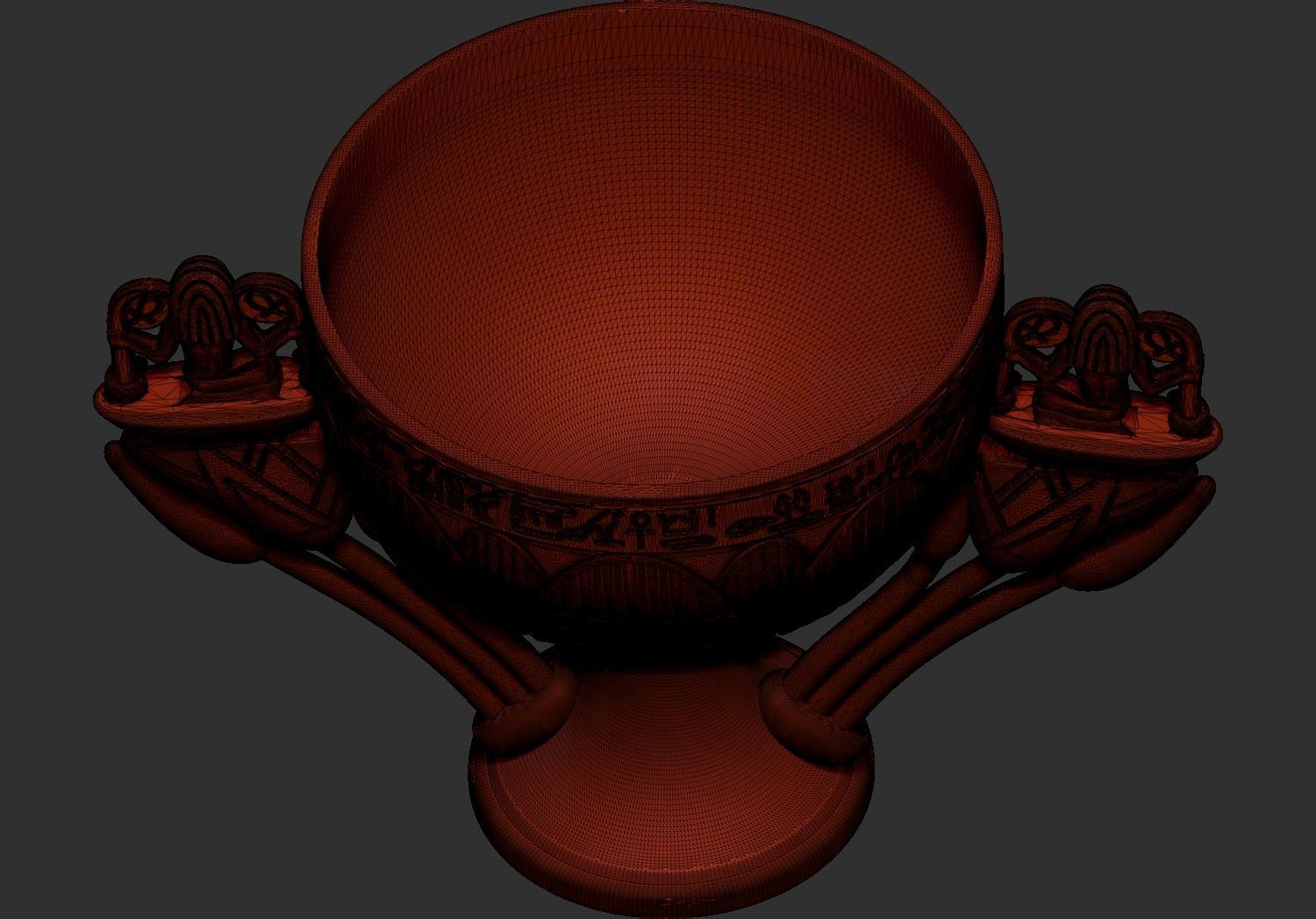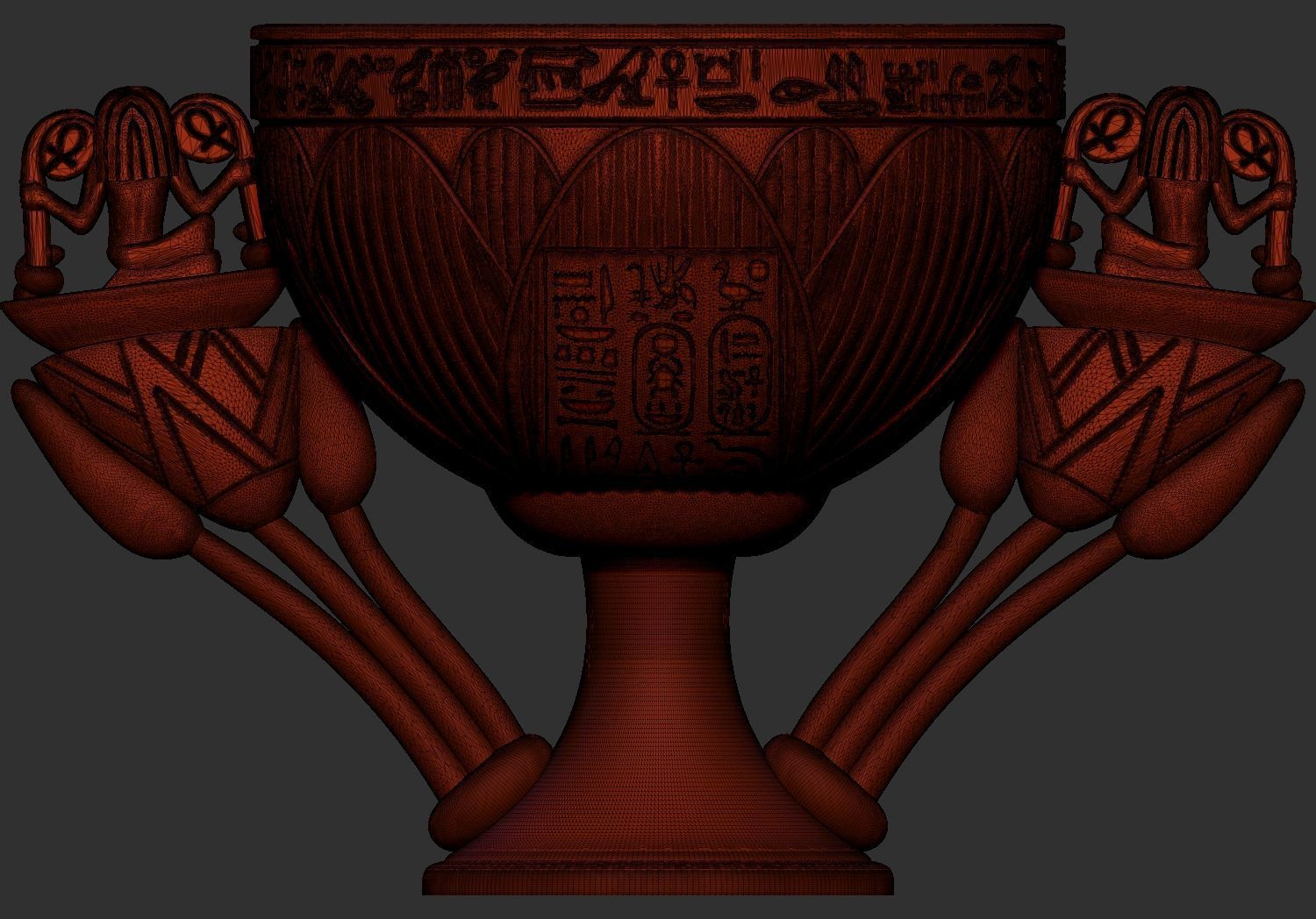
Tutankhamun Lotus Alabaster chalice 3d print model 3D print model
Tutankhamun Lotus Alabaster chalice 3d print model
The Lotus chalice, also known as the Alabaster chalice and referred to as the Wishing Cup by Howard Carter, originates from the tomb of the Ancient Egyptian pharaoh Tutankhamun of the 18th Dynasty. It was assigned the find number 014 and was previously exhibited at the Egyptian Museum in Cairo, bearing the inventory numbers JE 67465 and GEM 36. Currently, it has been relocated to the yet-to-be-opened Grand Egyptian Museum.
Discovery
The tomb of the young pharaoh (KV62) was discovered nearly intact in the Valley of the Kings in West Thebes by Howard Carter on November 4, 1922. The lotus chalice was among the initial artifacts uncovered by Carter and his team upon entering the tomb; it was found on the floor just inside the antechamber, although this was not its original location.
Material and Significance
The lotus chalice is meticulously carved from a single piece of alabaster, taking the form of a fully bloomed white lotus, characterized by its rounded petals. The chalice's handles are supported by blue lotus flowers, accompanied by upward-growing buds, with the deity Heh depicted seated on a basket (the neb symbol) at the tips of the petals. In each hand, Heh holds a palm rib marked with notches for counting years; each rib rests upon a tadpole positioned on a shen ring. At the top of each palm rib is an ankh symbol, representing life. This imagery is a typical representation of the god associated with million years, symbolizing infinity and eternity: the palm rib serves as the hieroglyph for year, the tadpole signifies 100,000, and the shen ring denotes eternity. The kneeling figure of the god represents the numeral one million. This motif is also present on other artifacts from the tomb, such as the cedar chair (JE 62029, find number 87). Consequently, the chalice embodies the infinite and eternal life of King Tutankhamun.
In Egyptian mythology, the lotus holds significant importance as it symbolizes the birth of the sun god, who is said to have emerged from the lotus flower.

